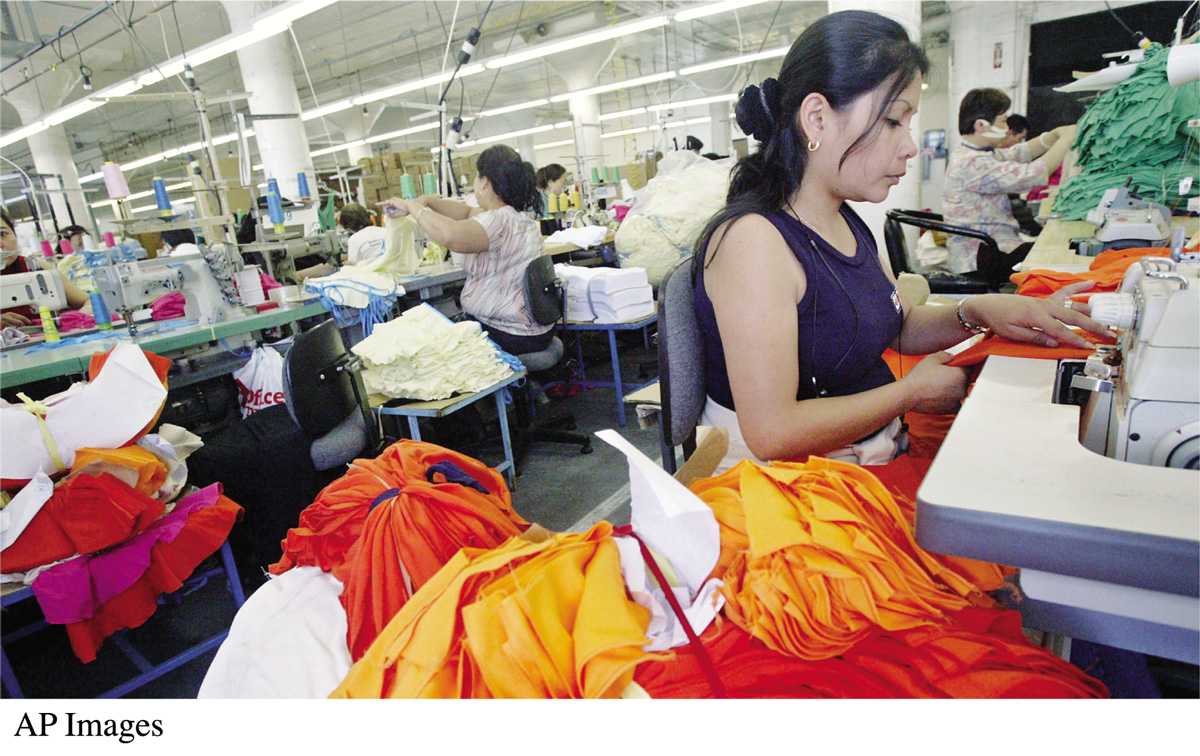MEDIA LITERACY Case Study: Improving the Credibility Gap
MEDIALITERACYCase StudyImproving the Credibility Gap
In the 1990s, a growing number of Americans focused on the problems of outsourcing: using the production, manufacturing, and labor resources of foreign companies to produce American brand-name products, sometimes under deplorable working conditions. Outsourcing was pushed into the public eye in 1996 after major media attention focused on morning talk-show host Kathie Lee Gifford when investigations by the National Labor Committee (now the Institute for Global Labour and Human Rights) revealed that part of her clothing line, made and distributed by Walmart, came from sweatshops in New York and Honduras. The sweatshops paid less than minimum wages, and some employed child laborers. Human-rights activists claimed that in overseas sweatshops in particular, children were being exploited in violation of international child-labor laws.


 Visit LaunchPad to see a clip from John Oliver’s piece on clothing companies. How is Oliver’s satire at odds with the Gap’s image?
Visit LaunchPad to see a clip from John Oliver’s piece on clothing companies. How is Oliver’s satire at odds with the Gap’s image?
Many leading clothing labels and retailers continue to ignore pressure from consumer and labor groups and still tolerate sweatshop conditions in which workers take home minimal pay. Gap Inc.—one of the world’s largest clothing retailers, with more than thirty-one hundred Gap, Banana Republic, Old Navy, and Athleta stores, made a huge statement in the industry by publicizing its efforts to watch over labor conditions at its overseas factories with its first Social Responsibility Report back in 2004. Yet while Gap’s reputation has arguably improved following these efforts, human-rights issues still arise with many major clothing companies, including some owned by Gap Inc.
That 2004 report and the reports that followed have comprised Gap’s efforts at improved transparency and better communication with its employees, its shareholders, and those concerned about garment industry operations. The company now employs a team of more than ninety people to inspect and improve working conditions in its approximately three thousand contracted garment factories in fifty countries, and continues to issue progress reports. Typical violations include lack of compliance with child-labor laws, pay below minimum wages, workweeks in excess of sixty hours, psychological coercion and verbal abuse, locked or inaccessible exits, and lack of access to potable water.
But while Gap and other companies have become more efficient and public in the way that they deal with these problems, the improved public relations doesn’t always mean that the problems have gone away. Gap and other major clothing brands received new criticism after a garment factory collapsed in Bangladesh, killing over eleven hundred workers and injuring twenty-five hundred more. Workers’ advocates say pressure by major brands like Gap have pushed unscrupulous factory owners to cut corners on safety and workers’ rights. After the collapse (and a major fire the previous year), Gap and other companies signed agreements calling for better and safe conditions, although critics note that Gap wasn’t among the companies that supported the right of Bangladeshi garment workers to organize. A 2015 segment on the satirical news program Last Week Tonight, hosted by John Oliver, called out more of the ongoing problems in the garment industry. As Oliver explains, major labels look the other way when the “official” local clothing manufacturers farm out much of the actual labor to subcontractors with poor working conditions and a lack of oversight.

APPLYING THE CRITICAL PROCESS
DESCRIPTION Select three clothing retailers—for example, chains like Target, Macy’s, Dillard’s, JCPenney, J.Crew, Ann Taylor, L Brands, or Abercrombie & Fitch.
ANALYSIS Go to each retailer’s corporate Web site, and (often under investor relations) find its social responsibility statement or guidelines. (If there is not a category like this, look for its code of ethics or business practices.) Look
FOR the patterns—similarities and differences—among the three. Do their ethics apply to only the corporate environment of the company, or do they also consider the environmental impact and labor conditions of their suppliers in the United States and developing countries?
INTERPRETATION How comprehensive and transparent should a corporation’s ethical and social responsibility guidelines be? (In other words, how broadly should a corporation define its “publics”—its employees, its customers, the local communities, the entire world—and what should the corporation promise to do?)
EVALUATION Which of the three retailers has the most comprehensive and transparent corporate social responsibility policy? What made it the best of the three?
ENGAGEMENT Engage directly with the business you were most impressed with by writing or e-mailing and telling it why. Contact one of the other businesses and tell it how it could improve its policy. You can also connect with a number of other groups, such as the Institute for Global Labour and Human Rights, to learn more about corporate labor records.